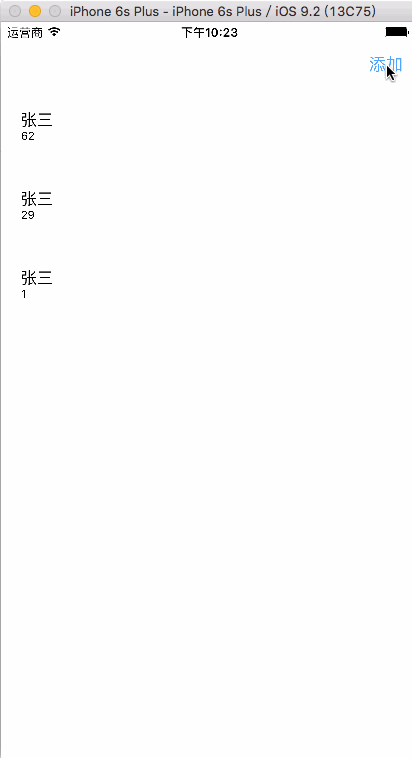CoreData使用了面向对象的方式来操作数据,负责在数据库中存储数据.它的底层就是使用类似于SQL的技术来实现的.CoreData提供了一种简便的对象持久化管理方式,让我们可以不关心数据的存储,只需关心对象的增加,删除,更改,读写就好了.
CoreData介绍
- CoreData是苹果公司封装的数据持久化框架,在iOS3.0中开始开放.
- 它允许用户按照实体-属性-值模型组织数据,并以二级制,XML或者sqlite数据文件的格式进行持久化
优点
- 它是苹果公司原生态的产品.
- 它可以节省代码量,大概是30%~70%
- 它支持可视化建模
- CoreData支持数据库版本升级
构成
我们在创建工程的时候,勾选Use Core Data选项,系统就会在AppDelegate自动帮我们生成包含CoreData的属性和方法.并且生成一个test.xcdatamodeld的文件.
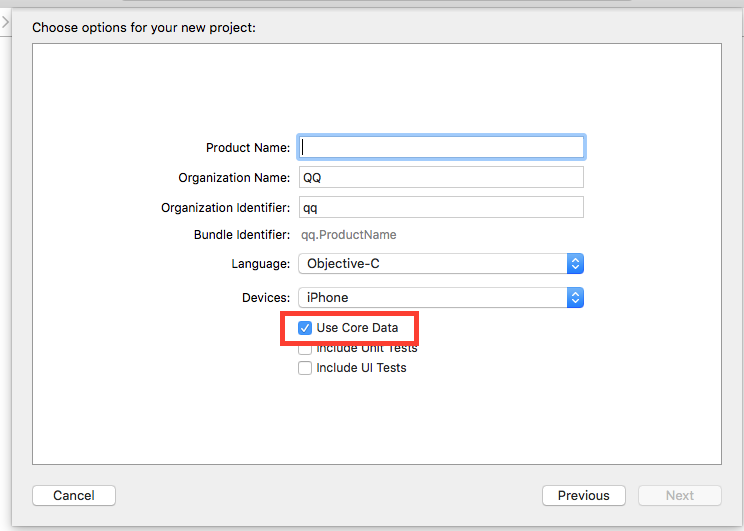
在AppDelegate文件中
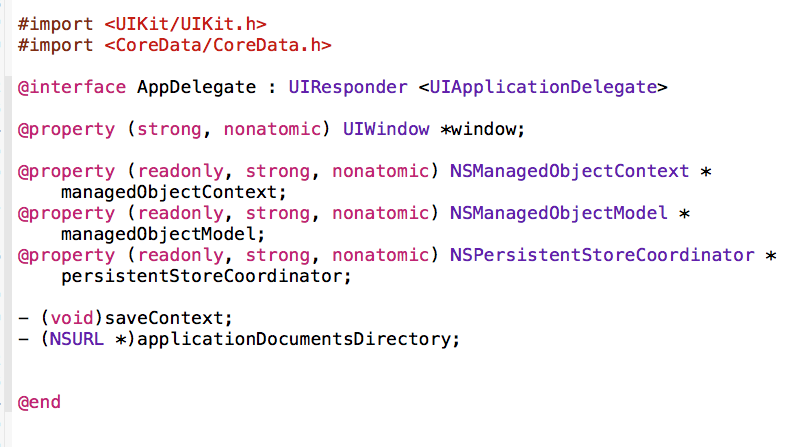
上面图片是系统自动帮我们生成的属性和方法代码.它们的作用分别是:
三个属性:
1.managedObjectContext,是被管理的数据上下文.它被用来操作实际的内容,进行插入,查询,删除数据. 2.managedObjectModel,它是一个被管理的数据模型.可以简单的理解为可视化建模文件,我们在可视化建模中是Entity自动生成Model,就是这个对象,方便让文件存储助理来进行管理. 3.persistentStoreCoordinator,这是一个持久化的存储助理.它是CoreData的核心,他负责连接所有的模块,包括真实的存储文件.
两个方法: 1.saveContext,它的作用就是将我们在内存中的数据进行持久化. 2.applicationDocumentsDirectory,这个方法是用来获取真实文件的路径的.
使用CoreData
这是使用一个简单的例子,对CoreData的增,删,改,查的使用进行说明.
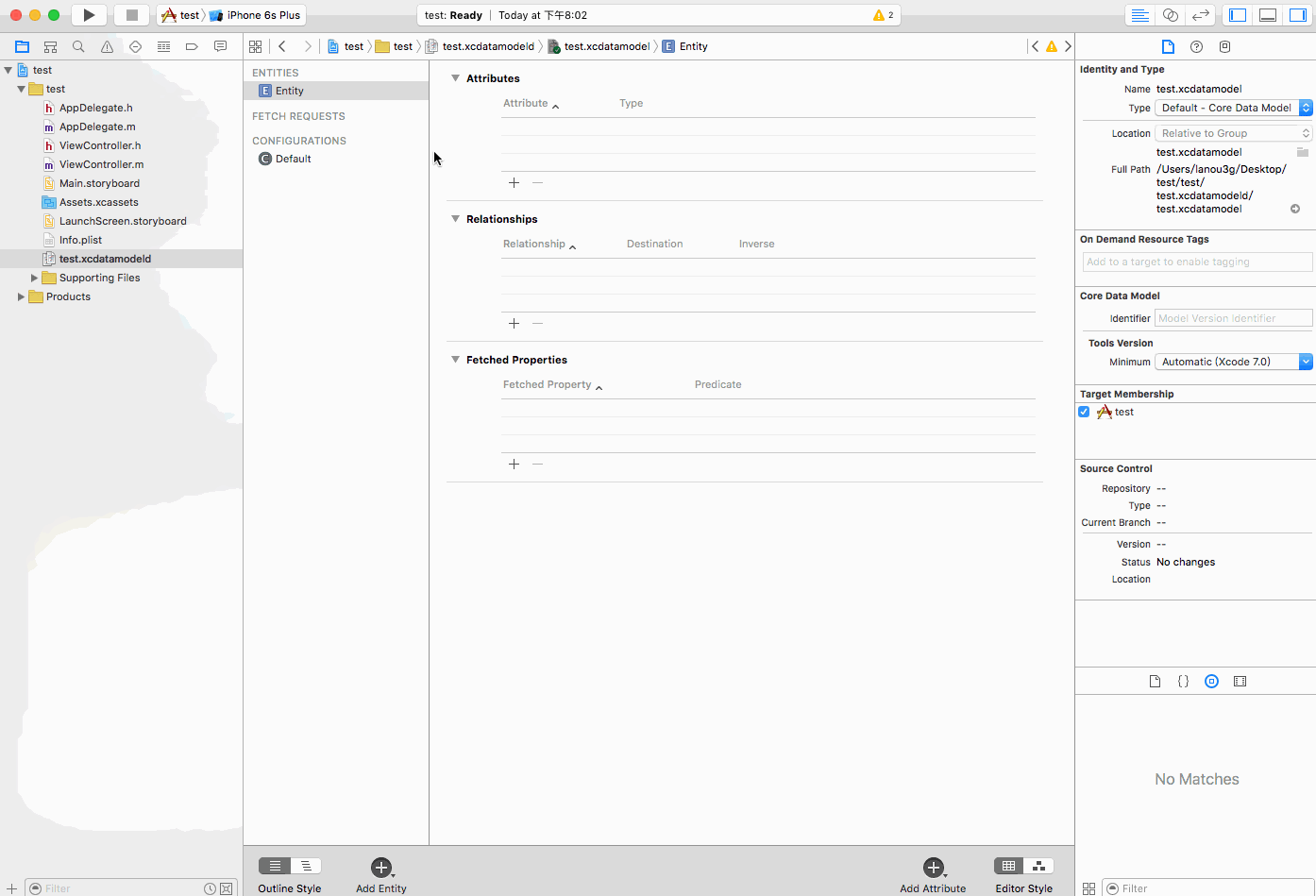
我们使用CoreData实现数据在tableView上的展示(查),添加(增),删除(删),点击更改(改).
UI界面
在storyboard中创建一个UITableViewController,把它放在NavgationController中,设置一个右按钮.为其关联方法,并且指定其为 initial View Controller.创建类文件,并进行关联,设置cell的样式为Subtitle. 在这里不详细赘述,如果想要了解可以移步[www.jianshu.com/p/872b84d98…]
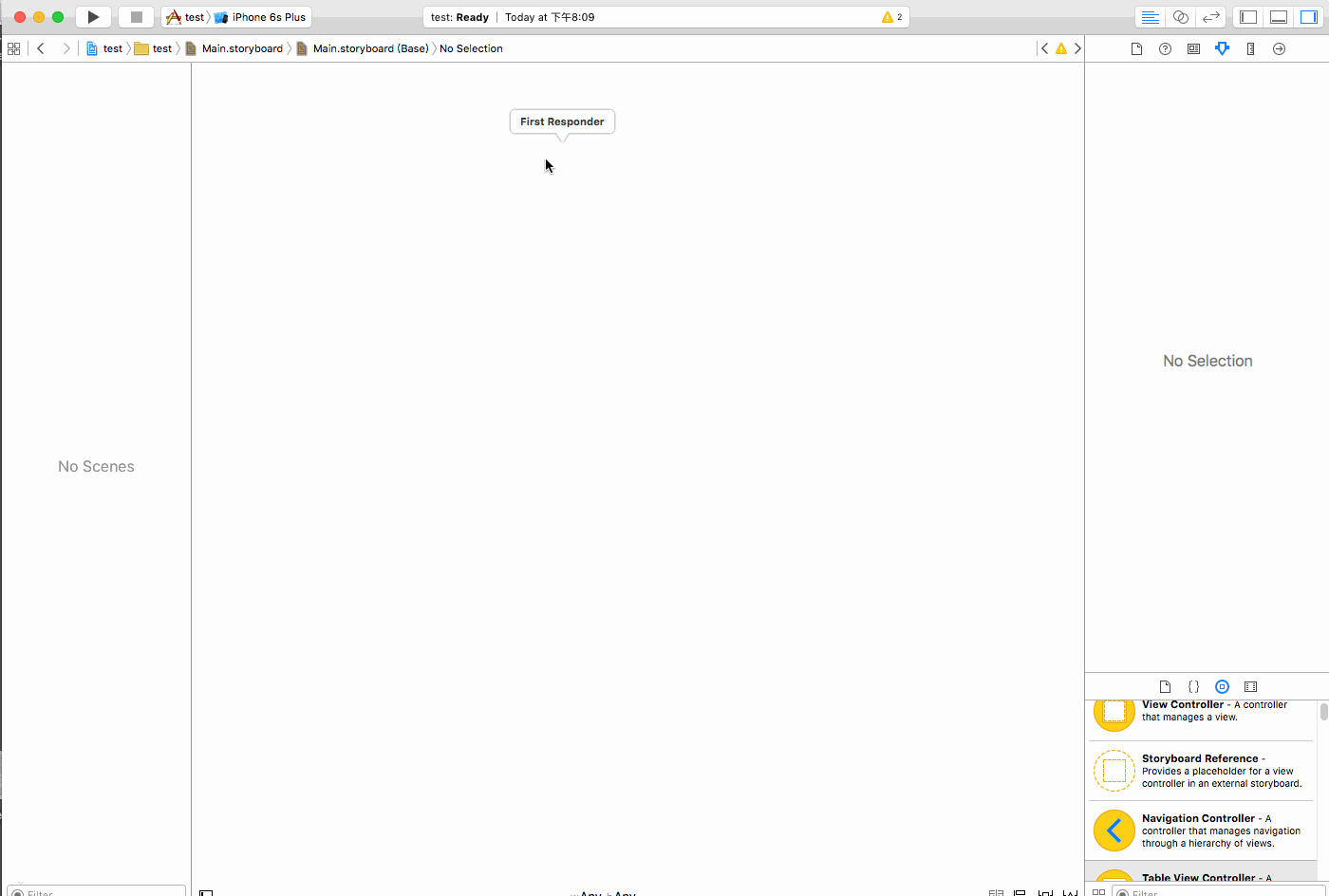
创建文件
选中.xcdatamodeld文件,按照上面的步骤创建一个Person实例,点击任务栏的Editor按钮,选择下图红框中的选项创建文件.
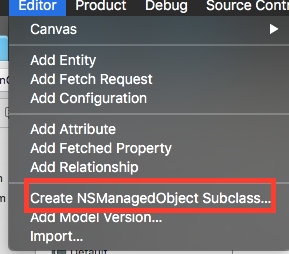
因为我们创建工程的时候,系统已经为我们在AppDelegate生成了一些属性和方法.我们只需要在tableView中引入APPDelegate的头文件就好了.
代码

声明两个属性,一个是上下文对象,我们使用它来处理所有关于存储的相关请求.另外一个就是数据源啦,用来在tableView上展示的数据.
既然声明了属性,我们就需要在为他们初始化,我们在ViewDidLoad方法中为其初始化,因为我们的managedObjectContext是来自与AppDelegate,所以选择下面的初始化方法.
// 进行数据初始化
AppDelegate *dele = [UIApplication sharedApplication].delegate;
self.myContext = dele.managedObjectContext;
self.allData = [NSMutableArray array];
// 通过CoreData读取本地所有的数据
[self getAllDataFromCoreData];
点击添加按钮添加数据
// 添加数据
- (IBAction)addAction:(UIBarButtonItem *)sender {
// 创建student对象
// 创建一个实体描述对象
NSEntityDescription *stuDis = [NSEntityDescription entityForName:@"Student" inManagedObjectContext:self.myContext];
Student *stu = [[Student alloc]initWithEntity:stuDis insertIntoManagedObjectContext:self.myContext];
// 给属性赋值
stu.name = @"张三";
stu.age = arc4random() % 73 + 1;
// 更新数据源
[self.allData addObject:stu];
// 修改界面
NSIndexPath *indexPath = [NSIndexPath indexPathForRow:self.allData.count - 1 inSection:0];
[self.tableView insertRowsAtIndexPaths:@[indexPath] withRowAnimation:UITableViewRowAnimationLeft];
// 将数据保存到文件中进行持久化
NSError *error = nil;
[self.myContext save:&error];
if (nil != error) {
NSLog(@"数据库持久化,存在问题");
}
[((AppDelegate *)[UIApplication sharedApplication].delegate) saveContext];
}
从数据库查询数据
- (void)getAllDataFromCoreData {
NSFetchRequest *fetchRequest = [[NSFetchRequest alloc] init];
NSEntityDescription *entity = [NSEntityDescription entityForName:@"Student" inManagedObjectContext:self.myContext];
[fetchRequest setEntity:entity];
// 排序条件
NSSortDescriptor *sortDescriptor = [[NSSortDescriptor alloc] initWithKey:@"age"
ascending:YES];
[fetchRequest setSortDescriptors:[NSArray arrayWithObjects:sortDescriptor, nil]];
NSError *error = nil;
NSArray *fetchedObjects = [self.myContext executeFetchRequest:fetchRequest error:&error];
if (fetchedObjects == nil) {
NSLog(@"两手空空,你让我如何盆满钵满");
}
// 将查询到的数据添加到数据源
[self.allData addObjectsFromArray:fetchedObjects];
// 从新加载tableView
[self.tableView reloadData];
}
点击cell改变数据
// 点击cell的响应事件
-(void)tableView:(UITableView *)tableView didSelectRowAtIndexPath:(NSIndexPath *)indexPath{
// 先查询
NSFetchRequest *fetchRequest = [[NSFetchRequest alloc] init];
NSEntityDescription *entity = [NSEntityDescription entityForName:@"Student" inManagedObjectContext:self.myContext];
[fetchRequest setEntity:entity];
// Specify how the fetched objects should be sorted
NSSortDescriptor *sortDescriptor = [[NSSortDescriptor alloc] initWithKey:@"age"
ascending:YES];
[fetchRequest setSortDescriptors:[NSArray arrayWithObjects:sortDescriptor, nil]];
NSError *error = nil;
NSArray *fetchedObjects = [self.myContext executeFetchRequest:fetchRequest error:&error];
Student *stu = self.allData[indexPath.row];
stu.name = @"尼古拉斯-赵四";
stu.age = 15;
// 更新数据源
[self.allData removeAllObjects];
[self.allData addObjectsFromArray:fetchedObjects];
// 刷新UI
[self.tableView reloadRowsAtIndexPaths:@[indexPath] withRowAnimation:UITableViewRowAnimationLeft];
// 将修改本地持久化
[self.myContext save:nil];
}
设置编辑时间 右滑删除
// 当点击tableViewCell的删除按钮的时候回调用(提交编辑请求的时候)
- (void)tableView:(UITableView *)tableView commitEditingStyle:(UITableViewCellEditingStyle)editingStyle forRowAtIndexPath:(NSIndexPath *)indexPath {
// 获取当前cell代表的数据
Student *stu = self.allData[indexPath.row];
// 更新数据源
[self.allData removeObject:stu];
// 更新UI
[tableView deleteRowsAtIndexPaths:@[indexPath] withRowAnimation:UITableViewRowAnimationFade];
// 将临时数据库里进行删除并进行本地持久化
[self.myContext deleteObject:stu];
[self.myContext save:nil];
}
其他的方法,设置分区数,行数,以及cell
- (NSInteger)numberOfSectionsInTableView:(UITableView *)tableView {
return 1;
}
- (NSInteger)tableView:(UITableView *)tableView numberOfRowsInSection:(NSInteger)section {
return self.allData.count;
}
- (UITableViewCell *)tableView:(UITableView *)tableView cellForRowAtIndexPath:(NSIndexPath *)indexPath {
UITableViewCell *cell = [tableView dequeueReusableCellWithIdentifier:@"main_cell" forIndexPath:indexPath];
Student *stu = self.allData[indexPath.row];
cell.textLabel.text = stu.name;
cell.detailTextLabel.text = [NSString stringWithFormat:@"%d",stu.age];
return cell;
}
最后的效果
